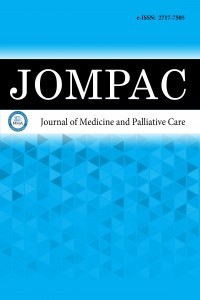1.
Ford T J, Corcoran D, Berry C. Stable coronary syndromes:pathophysiology, diagnostic advances and therapeutic need.Heart. 2018;104:284-292.
2.
Weber C, Noels H. Atherosclerosis: current pathogenesis andtherapeutic options. Nat Med. 20017;17(11):1410-1422.
3.
Knuuti J, Wijns W, Saraste A. et al. 2019 ESC Guidelines for thediagnosis and management of chronic coronary syndromes:the Task Force for the diagnosis and management of chroniccoronary syndromes of the European Society of Cardiology(ESC). Europ Heart J. 2019;41(3):407-477.
4.
Raygor V, Khera A. New recommendations and revised conceptsin recent guidelines on the management of dyslipidemias toprevent cardiovascular disease: The 2018 ACC/AHA and 2019ESC/EAS guidelines. Curr Cardiol Reports. 2019;22(9):87.
5.
Erdoğan A, İnan D, Genç Ö, et al. The triglyceride-glucose indexmight be a better indicator for predicting poor cardiovascularoutcomes in chronic coronary syndrome. J Clin Med. 2023;12(19):6201.
6.
Zhu XW, Deng FY, Lei SF. Meta-analysis of the atherogenic indexof plasma and other lipid parameters in relation to risk of type 2diabetes mellitus. Prim Care Diabetes. 2015;9(1):60-67.
7.
Cai G, Shi G, Xue S, Lu W. The atherogenic index of plasma is astrong and independent predictor for coronary artery disease inthe Chinese Han population. Medicine. 2017;96(37):e8058.
8.
Yueqiao S, Wenjun F, Chao H, Jingyi L, Lixian S. Atherogenicindex of plasma, triglyceride- glucose index and monocyte-to-lymphocyte ratio for predicting subclinical coronary arterydisease. Am J Med Sci. 2021;362(3):285-290.
9.
Won KB, Heo R, Park HB, et al. Atherogenic index of plasma andthe risk of rapid progression of coronary atherosclerosis beyondtraditional risk factors. Atherosclerosis. 2021;324:46-51.
10.
Mao Q, Zhou D, Li Y, Wang Y, Xu SC, Zhao XH. Thetriglyceride-glucose index predicts coronary artery diseaseseverity and cardiovascular outcomes in patients with non-ST-segment elevation acute coronary syndrome. Dis Markers.2019;2019:6891537.
11.
Nam JS, Kim MK, Nam JY, et al. Association between theatherogenic index of plasma and coronary artery calcificationprogression in Korean adults. Lipids Health Dis. 2020;19(1):1-7.
12.
Weber C, Noels H. Atherosclerosis: current pathogenesis andtherapeutic options. Nat Med. 20017;17(11):1410-1422.
13.
Cheng JM, Suoniemi M, Kardys I, et al. Plasma concentrationsof molecular lipid species in relation to coronary plaquecharacteristics and cardiovascular outcome: results of theATHEROREMO-IVUS study. Atherosclerosis. 2015;243(2):560-566.
14.
Yan PF, Liu L, Yuan J, Xu CX, Song D, Yan H. The racialdifferences in the clinical outcomes of intravascular ultrasound-guided percutaneous coronary intervention: a systematic reviewand meta-analysis. Am J Cardiol. 2023;203:193-202.
15.
Saito Y, Kobayashi Y, Fujii K, et al. CVIT 2023 clinical expertconsensus document on intravascular ultrasound. CardiovascInter Ther. 2023;39(1):1-14.
16.
Räber L, Mintz GS, Koskinas KC, et al. Clinical use ofintracoronary imaging. Part 1: guidance and optimization ofcoronary interventions. An expert consensus document ofthe European Association of Percutaneous CardiovascularInterventions. Eur Heart J. 2018;39(35):3281-3300.
17.
Hunsicker LG, Adler S, Caggiula A, et al. Predictors of theprogression of renal disease in the Modification of Diet in RenalDisease Study. Kidney Int. 1997;51(6):1908-1919.
18.
Chobanian AV, Bakris GL, Black HR, et al. Seventh reportof the joint national committee on prevention, detection,evaluation, and treatment of high blood pressure. Hypertension.2003;42(6):1206-1252.
19.
Expert Panel on Detection, Evaluation, and Treatment of HighBlood Cholesterol in Adults. Executive summary of the thirdreport of the National Cholesterol Education Program (NCEP)expert panel on the detection, evaluation, and treatment of highblood cholesterol in adults (Adult Treatment Panel III). JAMA.2001;285(19):2486-2497.
20.
He Y , Li Z, Yu L, et al. Association between the atherogenic indexof plasma and carotid artery plaques in patients with coronaryheart disease in different glucose metabolism states: an RCSCD-TCM study in Tianjin, China. Endocrine. 2023;81(2):252-261.
21.
Dobiásová M, Frohlich J. The plasma parameter log (TG/HDL-C)as an atherogenic index: correlation with lipoprotein particlesize and esterification rate in apoB-lipoprotein-depleted plasma(FER(HDL)). Clin Biochem. 2001;34(7):583-588.
22.
Dobiásová M, Frohlich J, Sedová M, Cheung MC, Brown BG.Cholesterol esterification and atherogenic index of plasmacorrelate with lipoprotein size and findings on coronaryangiography. J Lipid Res. 2011;52:566-571.
23.
Shen S, Lu Y, Qi H, et al. Association between ideal cardiovascularhealth and the atherogenic index of plasma. Medicine.2016;95(24):e3866.
24.
Niroumand S, Khajedaluee M, Khadem-Rezaiyan M, et al.Atherogenic Index of Plasma (AIP): a marker of cardiovasculardisease. Med J Islam Repub Iran. 2015;29:240.
25.
Ono M, Kawashima H, Hara H, et al. Advances in IVUS/OCTand future clinical perspective of a novel hybrid catheter systemin coronary imaging. Front Cardiovasc Med. 2020;31:7-119.

